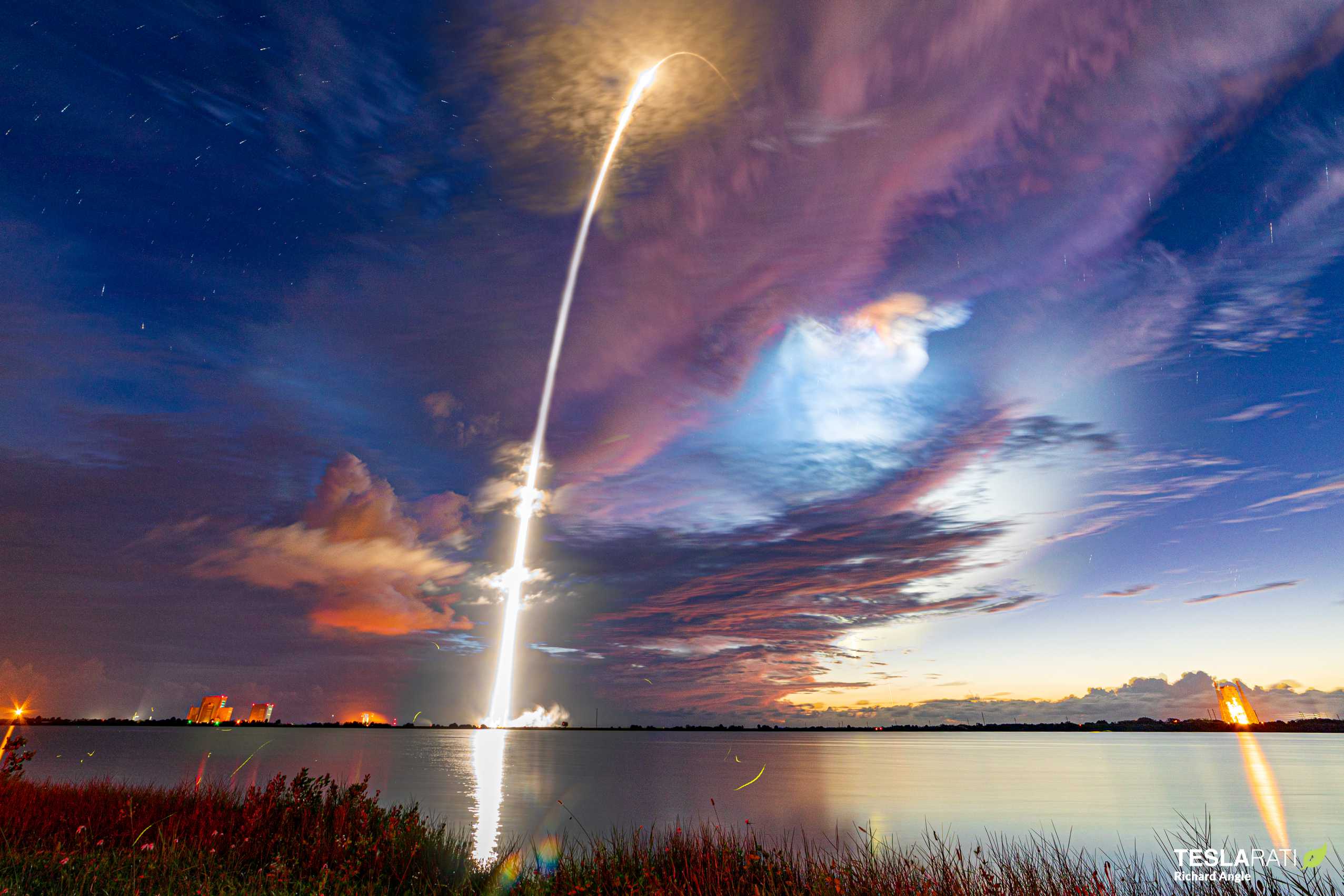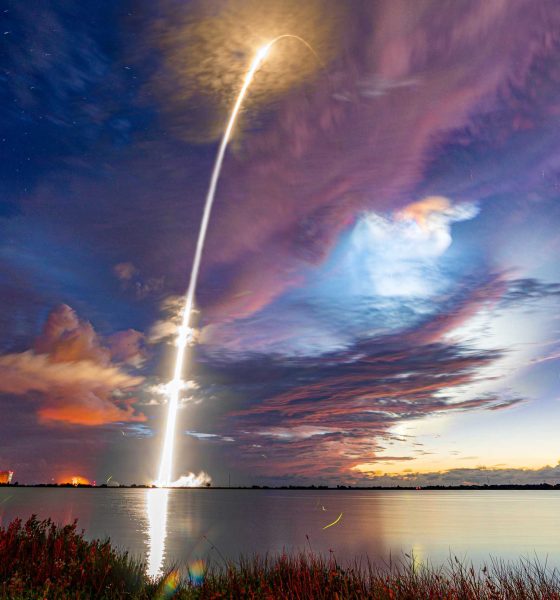

News
SpaceX on track to become third most valuable private company in the world
SpaceX is on track to become the third most valuable private company in the world if it successfully raises a new round of funding.
First reported and confirmed by CNBC, SpaceX hopes to raise between $500 million and $1 billion via a new investment offering. The Series N round would ultimately value the company at $44 billion – second only to China’s Didi and Bytedance (known in the US for TikTok) – if SpaceX finds significant investor interest at the upgraded $270 share price. Based on the ~$3.4 billion SpaceX has raised over more than a dozen rounds in just the last several years, strong investor demand is all but guaranteed.
The confidence and interest of investors can be explained in large part by SpaceX’s spectacular success in the face of countless systemic and technological challenges, as well as its association with founder and Tesla CEO Elon Musk. Perhaps even more at odds with success than SpaceX’s near-term goals, Tesla’s meteoric rise and iron grip on the global consumer electric vehicle industry has unsurprisingly helped convince many that success is often just a matter of time for Musk’s calculated ventures.


Like several recent fundraising rounds, SpaceX is seeking investors willing to support the company’s long-term vision in the hopes that its Starship and Starlink programs will be as disruptive and revolutionary as they aim to be. CNBC reports that SpaceX is telling prospective investors that Starlink aims to become a major player in a range of industries with a potential global market of more than $1 trillion per year. That figure is almost certainly a best-case theoretical value assuming that SpaceX has completed a vast ~40,000-satellite Starlink constellation and is able to capture almost every single prospective customer.
It’s still within the realm of possibility, though. On its own, Starlink holds the potential to become one of the largest companies in the world – public or private – if SpaceX achieves every ambitious goal it’s set itself to. In that context, there’s a chance that acquiring a stake in SpaceX at a valuation of ~$44 billion will set investors up for unprecedented returns on the order of Tesla investors buying shares for $100-200 in the early 2010s.

Of course, that investment rationale doesn’t even touch on Starship, aside from the fact that Starship will be a necessity if SpaceX is to have any chance of launching and maintaining a constellation of tens of thousands of satellites. Beyond the Starship/Super Heavy launch vehicle’s integral role in future plans for Starlink, the next-generation rocket is arguably a much thornier technical challenge than Starlink while also offering far less return-on-investment (ROI) certainty. Relative to other industries, particularly those with demand for communications services, the global demand for commercial launch services is minuscule, representing just a few billion dollars per year.


Even if Falcon 9 – let alone Starship – dramatically cuts the cost of access to orbit, there’s no guarantee beyond basic economic theory that lowering the barrier to entry will necessarily expand the market for launches. For a radical expansion in demand, entire new space-adjacent industries will have to be created given that the vast majority of modern demand comes from space-based communications companies.
SpaceX has known that this would be the case for at least half a decade, however, and is thus intelligently positioning Starlink as a primary investor focus as far as revenue and profit are concerned. Starlink would thus help SpaceX complete the Starship launch vehicle, which is far more focused on the company’s foundational goal of making humanity a multiplanetary species by enabling the creation of a self-sustaining city on Mars. Still, Starship will need to be revolutionarily affordable, reliable, and reusable for SpaceX to ever even dream of achieving that founding goal.
In the process of tackling those technical challenges, Starship could very well expand the global space industry by one or several magnitudes, but it will remain a major wildcard up until the day it does.
Check out Teslarati’s Marketplace! We offer Tesla accessories, including for the Tesla Cybertruck and Tesla Model 3.

Elon Musk
Elon Musk’s X will start using a Tesla-like software update strategy
The initiative seems designed to accelerate updates to the social media platform, while maintaining maximum transparency.

Elon Musk’s social media platform X will adopt a Tesla-esque approach to software updates for its algorithm.
The initiative seems designed to accelerate updates to the social media platform, while maintaining maximum transparency.
X’s updates to its updates
As per Musk in a post on X, the social media company will be making a new algorithm to determine what organic and advertising posts are recommended to users. These updates would then be repeated every four weeks.
“We will make the new 𝕏 algorithm, including all code used to determine what organic and advertising posts are recommended to users, open source in 7 days. This will be repeated every 4 weeks, with comprehensive developer notes, to help you understand what changed,” Musk wrote in his post.
The initiative somewhat mirrors Tesla’s over-the-air update model, where vehicle software is regularly refined and pushed to users with detailed release notes. This should allow users to better understand the details of X’s every update and foster a healthy feedback loop for the social media platform.
xAI and X
X, formerly Twitter, has been acquired by Elon Musk’s artificial intelligence startup, xAI last year. Since then, xAI has seen a rapid rise in valuation. Following the company’s the company’s upsized $20 billion Series E funding round, estimates now suggest that xAI is worth tens about $230 to $235 billion. That’s several times larger than Tesla when Elon Musk received his controversial 2018 CEO Performance Award.
As per xAI, the Series E funding round attracted a diverse group of investors, including Valor Equity Partners, Stepstone Group, Fidelity Management & Research Company, Qatar Investment Authority, MGX, and Baron Capital Group, among others. Strategic partners NVIDIA and Cisco Investments also continued support for building the world’s largest GPU clusters.
News
Tesla FSD Supervised wins MotorTrend’s Best Driver Assistance Award
The decision marks a notable reversal for the publication from prior years, with judges citing major real-world improvements that pushed Tesla’s latest FSD software ahead of every competing ADAS system.

Tesla’s Full Self-Driving (Supervised) system has been named the best driver-assistance technology on the market, earning top honors at the 2026 MotorTrend Best Tech Awards.
The decision marks a notable reversal for the publication from prior years, with judges citing major real-world improvements that pushed Tesla’s latest FSD software ahead of every competing ADAS system. And it wasn’t even close.
MotorTrend reverses course
MotorTrend awarded Tesla FSD (Supervised) its 2026 Best Tech Driver Assistance title after extensive testing of the latest v14 software. The publication acknowledged that it had previously criticized earlier versions of FSD for erratic behavior and near-miss incidents, ultimately favoring rivals such as GM’s Super Cruise in earlier evaluations.
According to MotorTrend, the newest iteration of FSD resolved many of those shortcomings. Testers said v14 showed far smoother behavior in complex urban scenarios, including unprotected left turns, traffic circles, emergency vehicles, and dense city streets. While the system still requires constant driver supervision, judges concluded that no other advanced driver-assistance system currently matches its breadth of capability.
Unlike rival systems that rely on combinations of cameras, radar, lidar, and mapped highways, Tesla’s FSD operates using a camera-only approach and is capable of driving on city streets, rural roads, and freeways. MotorTrend stated that pure utility, the ability to handle nearly all road types, ultimately separated FSD from competitors like Ford BlueCruise, GM Super Cruise, and BMW’s Highway Assistant.
High cost and high capability
MotorTrend also addressed FSD’s pricing, which remains significantly higher than rival systems. Tesla currently charges $8,000 for a one-time purchase or $99 per month for a subscription, compared with far lower upfront and subscription costs from other automakers. The publication noted that the premium is justified given FSD’s unmatched scope and continuous software evolution.
Safety remained a central focus of the evaluation. While testers reported collision-free operation over thousands of miles, they noted ongoing concerns around FSD’s configurable driving modes, including options that allow aggressive driving and speeds beyond posted limits. MotorTrend emphasized that, like all Level 2 systems, FSD still depends on a fully attentive human driver at all times.
Despite those caveats, the publication concluded that Tesla’s rapid software progress fundamentally reshaped the competitive landscape. For drivers seeking the most capable hands-on driver-assistance system available today, MotorTrend concluded Tesla FSD (Supervised) now stands alone at the top.
News
Elon Musk’s Grokipedia surges to 5.6M articles, almost 79% of English Wikipedia
The explosive growth marks a major milestone for the AI-powered online encyclopedia, which was launched by Elon Musk’s xAI just months ago.

Elon Musk’s Grokipedia has grown to an impressive 5,615,201 articles as of today, closing in on 79% of the English Wikipedia’s current total of 7,119,376 articles.
The explosive growth marks a major milestone for the AI-powered online encyclopedia, which was launched by Elon Musk’s xAI just months ago. Needless to say, it would only be a matter of time before Grokipedia exceeds English Wikipedia in sheer volume.
Grokipedia’s rapid growth
xAI’s vision for Grokipedia emphasizes neutrality, while Grok’s reasoning capabilities allow for fast drafting and fact-checking. When Elon Musk announced the initiative in late September 2025, he noted that Grokipedia would be an improvement to Wikipedia because it would be designed to avoid bias.
At the time, Musk noted that Grokipedia “is a necessary step towards the xAI goal of understanding the Universe.”
Grokipedia was launched in late October, and while xAI was careful to list it only as Version 0.1 at the time, the online encyclopedia immediately earned praise. Wikipedia co-founder Larry Sanger highlighted the project’s innovative approach, noting how it leverages AI to fill knowledge gaps and enable rapid updates. Netizens also observed how Grokipedia tends to present articles in a more objective manner compared to Wikipedia, which is edited by humans.
Elon Musk’s ambitious plans
With 5,615,201 total articles, Grokipedia has now grown to almost 79% of English Wikipedia’s article base. This is incredibly quick, though Grokipedia remains text-only for now. xAI, for its part, has now updated the online encyclopedia’s iteration to v0.2.
Elon Musk has shared bold ideas for Grokipedia, including sending a record of the entire knowledge base to space as part of xAI’s mission to preserve and expand human understanding. At some point, Musk stated that Grokipedia will be renamed to Encyclopedia Galactica, and it will be sent to the cosmos.
“When Grokipedia is good enough (long way to go), we will change the name to Encyclopedia Galactica. It will be an open source distillation of all knowledge, including audio, images and video. Join xAI to help build the sci-fi version of the Library of Alexandria!” Musk wrote, adding in a later post that “Copies will be etched in stone and sent to the Moon, Mars and beyond. This time, it will not be lost.”








